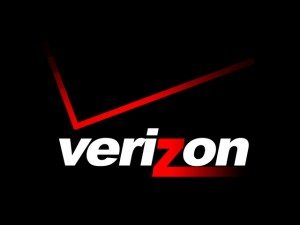
WESTLAKE VILLAGE, Calif: 29 August 2013 — Overall network performance levels of wireless phones differ depending on whether services are deployed by full-service or non-contract carriers, according to the J.D. Power 2013 U.S. Wireless Network Quality Performance StudySM–Volume 2 released today.
Now in its 11th year, this semiannual study evaluates wireless customers’ most recent usage activities in three areas that impact network performance: calling, messaging and data. Overall network performance is based on 10 problem areas that impact the customer experience: dropped calls; calls not connected; audio issues; failed/late voicemails; lost calls; text transmission failures; late text message notifications; Web connection errors; slow downloads; and email connection errors. Network performance issues are measured as problems per 100 (PP100) network connections, with a lower score reflecting fewer problems and better network performance. Carrier performance is examined in six geographic regions: Northeast, Mid-Atlantic, Southeast, North Central, Southwest and West.
|
Key Findings
- Customers experience significantly fewer data problems with 4G LTE smartphones (16 PP100) than with 3G phones (18 PP100).
- Customers with 4G-enabled smartphones are more loyal to their wireless carrier than are customers with devices that use other technologies.
- Problem incidence among full-service carriers is lower in all network problem areas than among non-contract carriers.
- Monthly spending increases by an average of $17 among customers who have switched from a previous carrier to obtain a better network or coverage.
|
The study finds that overall network performance varies widely by service segment and the activities performed on the handset. For example, there are fewer reported problems overall among wireless customers who use a full-service provider network, compared with problems reported by customers of non-contract carriers. Overall, problems associated with placing calls, messaging and data-related activities average 11 problems per 100 calls (PP100) for full-service carriers. This compares with 13 PP100 among customers of non-contract carriers.
In addition, the specific types of problems experienced may vary greatly by segment type. In regard to data-related issues, there are more reported problems among non-contract customers for excessively slow downloads (21 PP100) and Web connection failures (14 PP100), compared with 16 PP100 and 10 PP100, respectively, among full-service customers. Performance also varies between the two service segments for call quality and messaging issues, but to a lesser degree than with data speed and connection issues.
“While it’s not unexpected to find network performance disparity between these two segments, given the robust upgrade to 4G technology in the full-service segment, there is performance disparity in the non-contract segment, even between those carriers that own their own network and those that piggyback on full-service networks,” said Kirk Parsons, senior director of wireless services at J.D. Power. “Based on the varying degree of consistency with overall network performance, it’s critical that wireless carriers continue to invest in improving both the call quality and especially the data connection-related issues that customers continue to experience as 4G service becomes more prevalent.”
According to Parsons, there is a financial impact in providing a high-performing network, as spending increases by an average of $17 per customer among those who have switched from a previous carrier to obtain a better network/coverage, compared with those who switch for other reasons.
Study Rankings
For the first time since the study moved to a regional format in 2004, Verizon Wireless is the first wireless provider to rank highest across all six regions of the country. By region, Verizon Wireless ranks highest in the Northeast region for an 18th consecutive reporting period. Verizon Wireless achieves fewer customer-reported problems with dropped calls, initial connections, transmission failures and late text messages, compared with the regional average. Verizon Wireless also ranks highest in the Mid-Atlantic, Southeast, Southwest, and West regions, and also ranks highest in a tie in the North Central region.
U.S. Cellular ranks highest (in a tie this period) in the North Central region for a 16th consecutive reporting period. Compared with the regional average, U.S. Cellular has fewer customer-reported problems with dropped calls, failed initial connections, audio problems, failed voice mails and lost calls.
The 2013 U.S. Wireless Network Quality Performance Study–Volume 2 is based on responses from 26,491 wireless customers. The study was fielded between January and June 2013.
About J.D. Power
J.D. Power is a global marketing information services company providing performance improvement, social media and customer satisfaction insights and solutions. The company’s quality and satisfaction measurements are based on responses from millions of consumers annually. Headquartered in Westlake Village, Calif., J.D. Power has offices in North America, Europe and Asia Pacific. For more information on car reviews and ratings, car insurance, health insurance, cell phone ratings, and more, please visit JDPower.com. J.D. Power is a business unit of McGraw-Hill Financial.
About McGraw Hill Financial
McGraw Hill Financial (NYSE: MHFI) is a leading financial intelligence company providing the global capital and commodity markets with independent benchmarks, credit ratings, portfolio and enterprise risk solutions, and analytics. The Company’s iconic brands include: Standard & Poor’s Ratings Services, S&P Capital IQ, S&P Dow Jones Indices, Platts, CRISIL, J.D. Power, and McGraw Hill Construction. The Company has approximately 17,000 employees in 27 countries. Additional information is available at www.mhfi.com.



